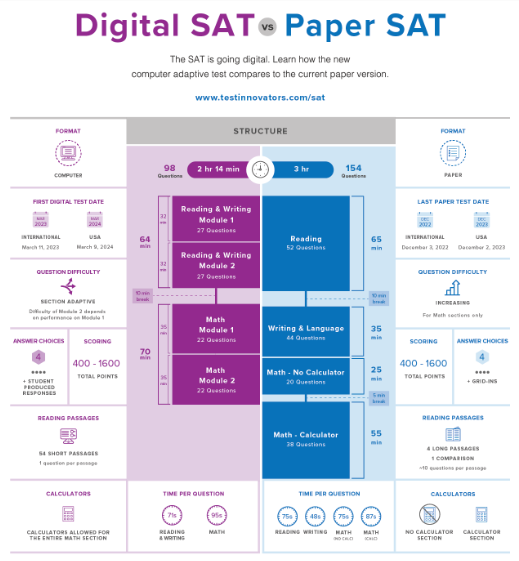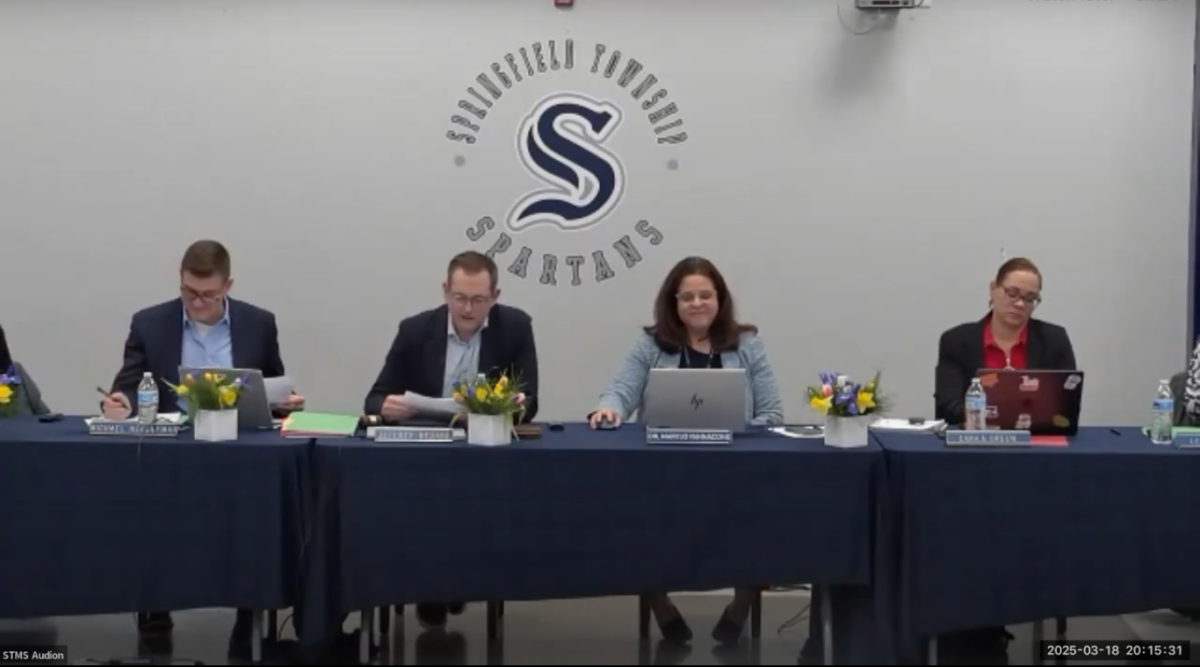 In preparation for all SATs being given digitally in Spring 2024, this October, the juniors took the PSAT online for the first time, in their own lives and the history of the College Board administering the test.
In preparation for all SATs being given digitally in Spring 2024, this October, the juniors took the PSAT online for the first time, in their own lives and the history of the College Board administering the test.
Preparation
At Springfield Township High School, steps were implemented to ensure this move would be as seamless as possible. According to Ms. Barbone, a school counselor at STHS, it was “decided that we would test as late as possible within the window to observe how other districts handled the shift and make adjustments accordingly.”
When reports from other schools began to circulate about technological difficulties impacting the students taking the PSAT, Ms. Barbone said the school “prepared tech team[s] and stationed them around all the testing sites in case students faced any difficulties” and made sure to provide plenty of charging stations in case a student forgot to charge their Chromebooks.
Their preparation paid off as many juniors didn’t experience any technical difficulties, and if they did, issues were resolved quickly.
Testing Environment
However, Ms. Barbone said the new format heavily impacted the testing environment. She observed students taking breaks, starting new sections, and finishing at different times.
Jacqueline Walters, a junior, says that the different timing in the environment distracted her as students stopped testing while she was still going. She stopped before the other people were finished, saying, “It was just hard to concentrate with so much movement.”
While Ms. Barbone said that the shorter testing window was better for the students, it was a departure from the traditional testing experience. Anyone who has previously taken the SAT knows the time spent testing is heavily regulated, with instructions being read out at every stopping point. With the new online format, this wasn’t necessary. Ms. Barbone noted that while previously, she would spend 20 minutes reading out instructions, students were now able to read the instructions on their computers.
Online Format
While the test has shifted into an online forum, practice materials haven’t. Helen Lutz, a junior, says that while she practiced on Khan Academy, she didn’t feel like it prepared her for the questions on the PSAT. “Some of the questions just took me off guard, and I didn’t understand everything it was asking of me.”
Nathan Gazzara, a junior, said that he really “liked taking the test online” because of his ability “to see how much time was left in each section.” He felt that this allowed him to manage his time better, which helped him to finish the test on time.
Mr. Shearer, another school counselor, said the new format allowed the clock to be displayed privately for the student instead of just somewhere in the room.
However, Carlos Cejas, another junior, said that while he didn’t hate the new format, he preferred the paper format. He “likes the ability to annotate on tests” as it helps him process the questions better, and he disliked how the new format took that away.
Cejas also said that the question difference threw him, especially in the English section. The main difference is that while previously, students would answer a series of questions based on one passage, there was now a passage for every question.
Additionally, the new online PSAT is supposed to be “adaptive.” However, junior Kaz Kiguchi felt that “both sections of the test were relatively similar” in difficulty and substance.
Jacqueline Walters, who took the on-paper SAT in October, noted that the PSAT, with the new form of questions, felt more like “Starr testing rather than the traditional SAT.” Kiguchi and Cejas felt similarly, saying this wasn’t like other standardized tests they had taken.
Trends in Scoring
Kate Matthews, a senior, participated in a study from College Board last year where she took both the virtual SAT and the traditional paper SAT. When comparing the two, she says that “while the content of the two tests were fairly similar, the way the questions were asked differed considerably.”
Similar to other students, she noticed the differences in the English questions. She also mentioned how the questions shifted in difficulty as she tested. Despite these changes, she did note that her scores for both tests were exceedingly similar, with her English subscore being the same for both and her math being a little lower for the online format.
Matthews’ scores seem to fit the overall trend; this year marked a small decrease in average scores from the previous year. Mr. Shearer shared that 2022 the average PSAT score was 1045; in 2023, it was 1021. However, he added that nothing can truly be inferred from these scores. It’s natural that there would be an adjustment period and as a school, students are still scoring well over the average. In 2023, the average PSAT score in Pennsylvania was a 963 and nationally it was a 976.
Within the subscores, the scores typically decreased by 10 from 2022 to 2023. However, Mr. Shearer and Ms. Barbone both agree that this is likely due to a lack of resources for the new testing and fewer avenues of preparation rather than faults in the actual test. This test was the beginning of an adjustment period, and this bump will likely smooth over time.
Conclusion
Overall, Ms. Barbone feels that colleges are “moving away from the SAT and other standardized tests.” An SAT score or even a PSAT score can help determine whether or not a college is a good fit for a student even if they don’t choose to submit, but it doesn’t have to count for much more. It is only one data point and does not define an applicant at all.


















